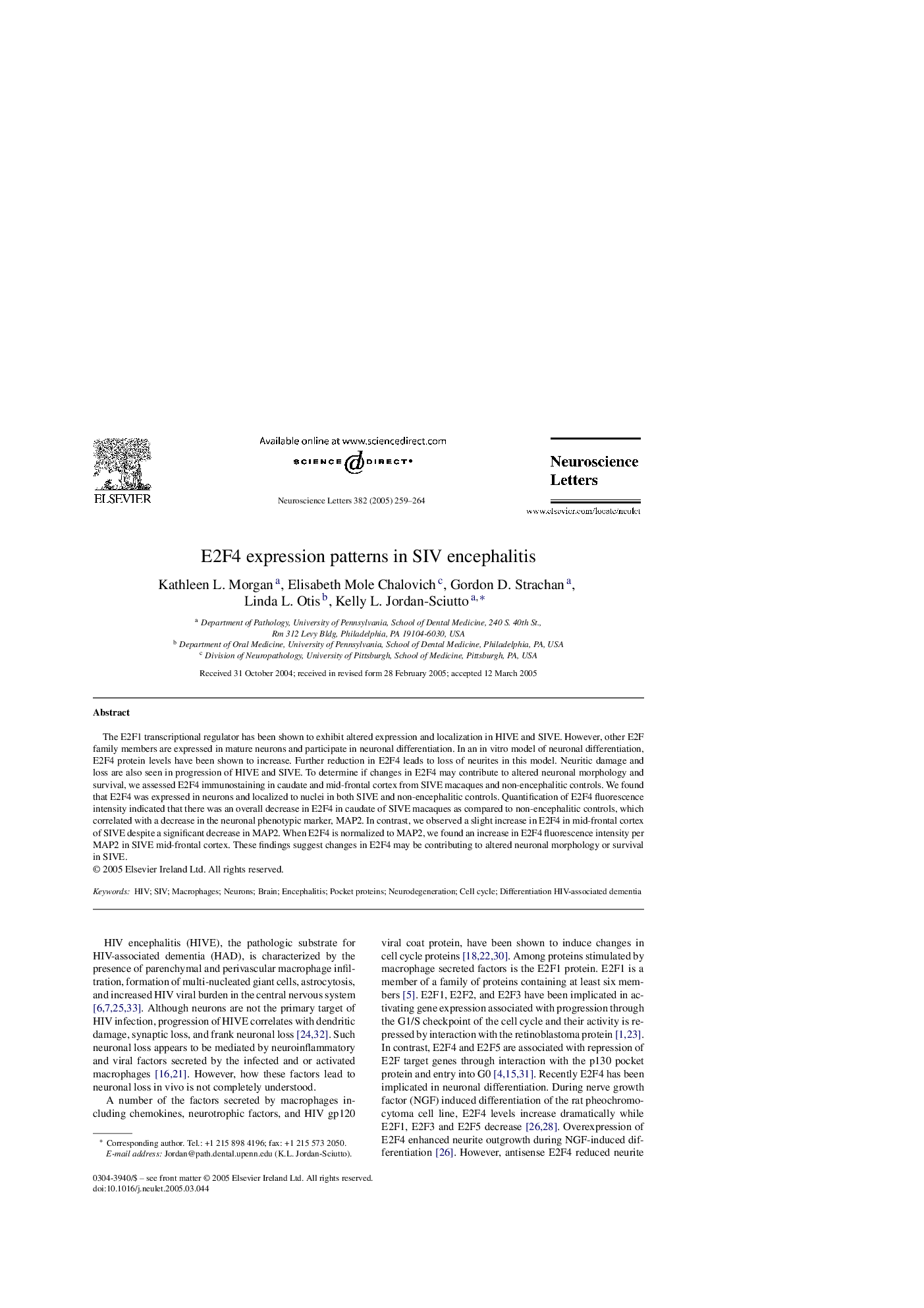| Article ID | Journal | Published Year | Pages | File Type |
|---|---|---|---|---|
| 9429509 | Neuroscience Letters | 2005 | 6 Pages |
Abstract
The E2F1 transcriptional regulator has been shown to exhibit altered expression and localization in HIVE and SIVE. However, other E2F family members are expressed in mature neurons and participate in neuronal differentiation. In an in vitro model of neuronal differentiation, E2F4 protein levels have been shown to increase. Further reduction in E2F4 leads to loss of neurites in this model. Neuritic damage and loss are also seen in progression of HIVE and SIVE. To determine if changes in E2F4 may contribute to altered neuronal morphology and survival, we assessed E2F4 immunostaining in caudate and mid-frontal cortex from SIVE macaques and non-encephalitic controls. We found that E2F4 was expressed in neurons and localized to nuclei in both SIVE and non-encephalitic controls. Quantification of E2F4 fluorescence intensity indicated that there was an overall decrease in E2F4 in caudate of SIVE macaques as compared to non-encephalitic controls, which correlated with a decrease in the neuronal phenotypic marker, MAP2. In contrast, we observed a slight increase in E2F4 in mid-frontal cortex of SIVE despite a significant decrease in MAP2. When E2F4 is normalized to MAP2, we found an increase in E2F4 fluorescence intensity per MAP2 in SIVE mid-frontal cortex. These findings suggest changes in E2F4 may be contributing to altered neuronal morphology or survival in SIVE.
Related Topics
Life Sciences
Neuroscience
Neuroscience (General)
Authors
Kathleen L. Morgan, Elisabeth Mole Chalovich, Gordon D. Strachan, Linda L. Otis, Kelly L. Jordan-Sciutto,
